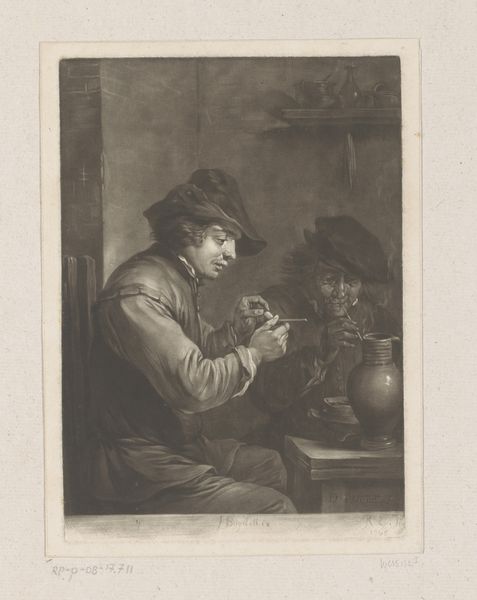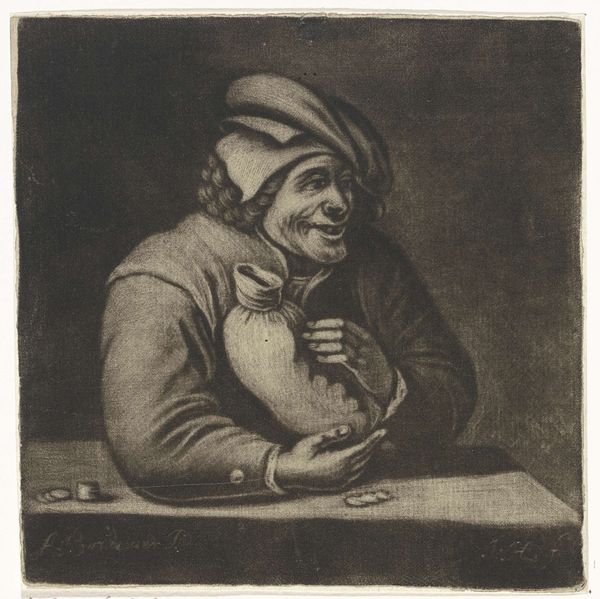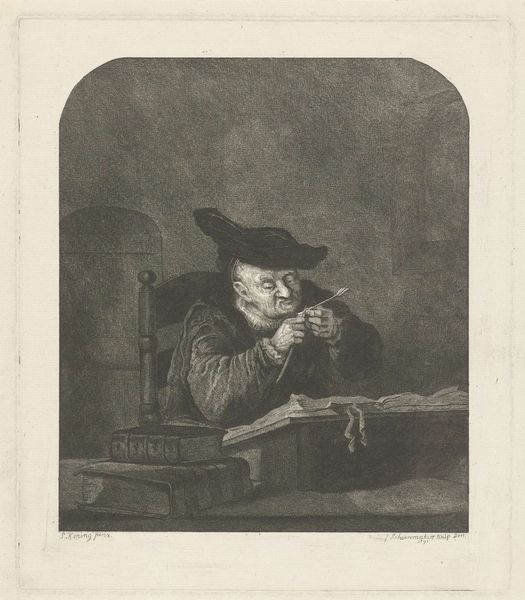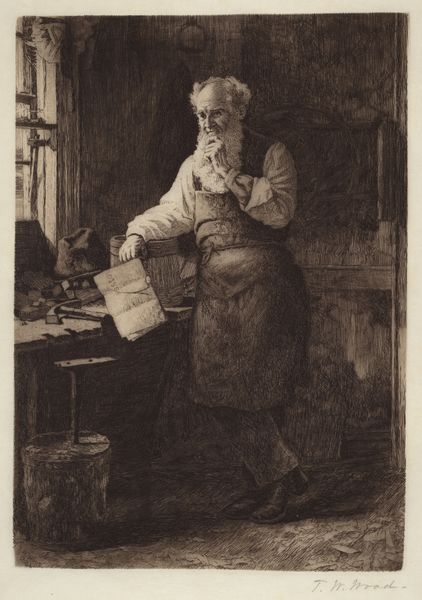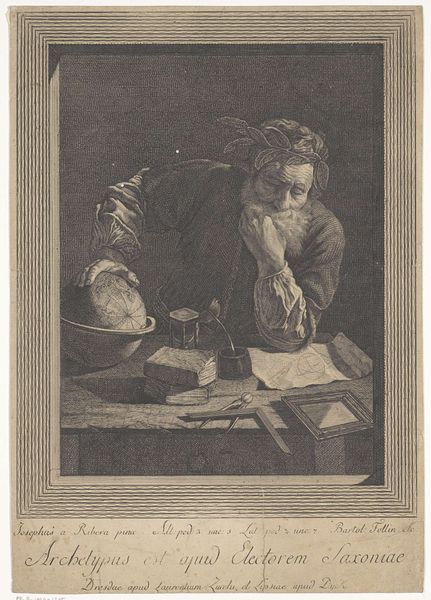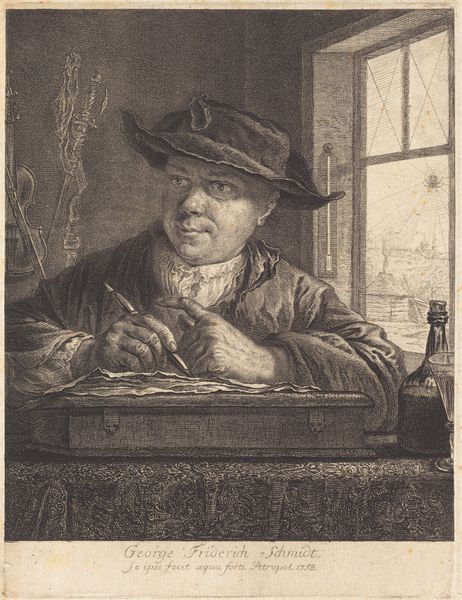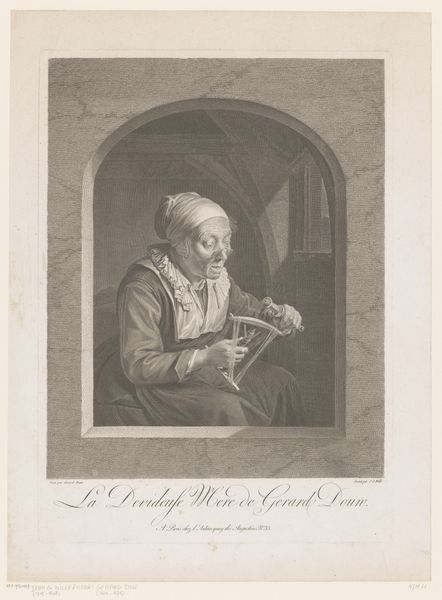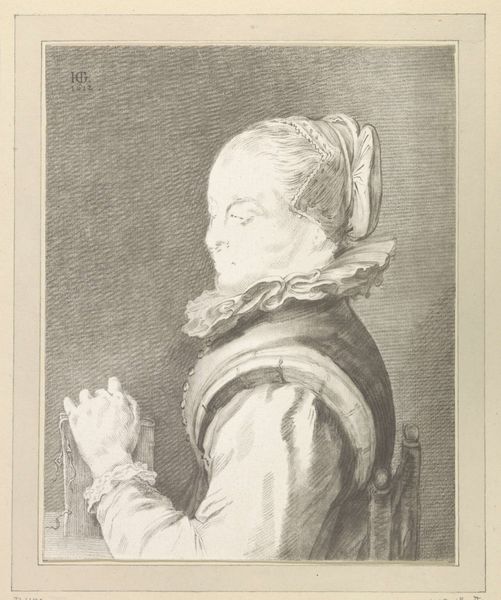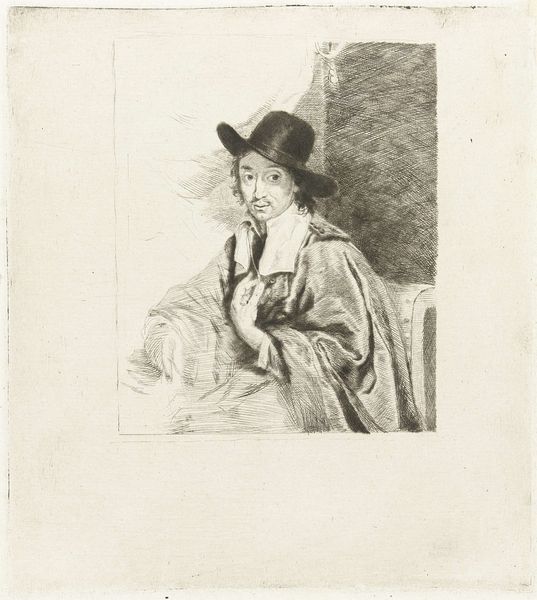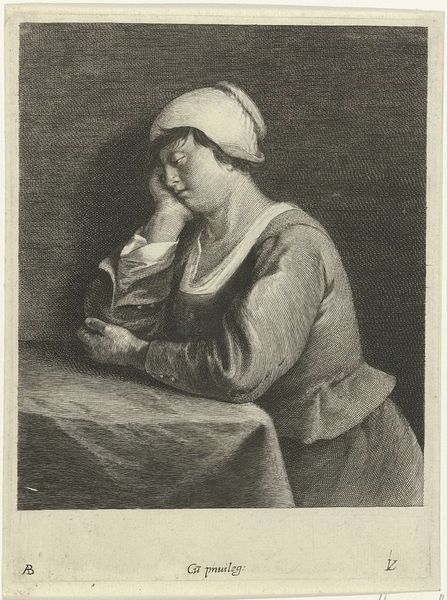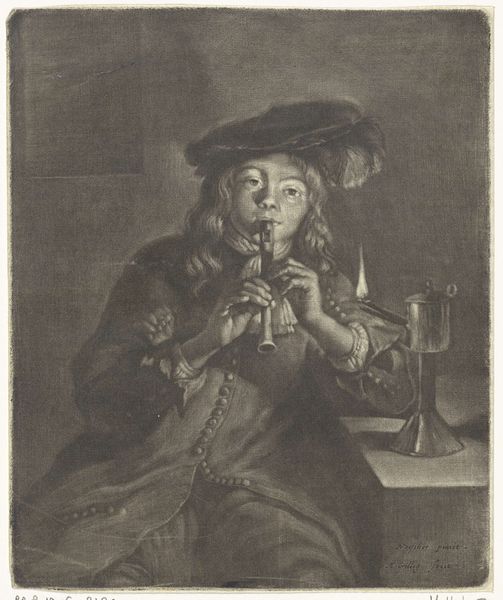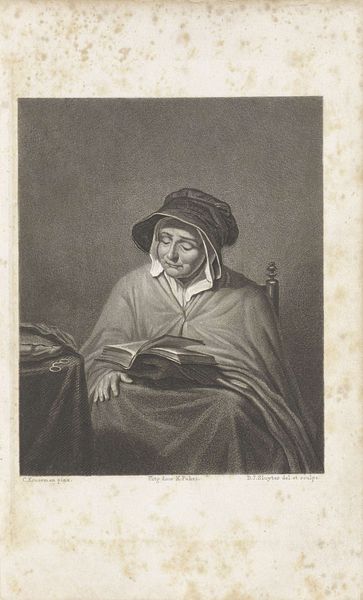
print, engraving
#
baroque
#
dutch-golden-age
# print
#
portrait drawing
#
genre-painting
#
engraving
#
realism
Dimensions: height 308 mm, width 220 mm
Copyright: Rijks Museum: Open Domain
Editor: This is "Oude vrouw met een haring in de hand," or "Old Woman with a Herring," by Dirk Koedijck, made in 1731. It's an engraving. I'm struck by the woman's direct gaze; she seems to be inviting the viewer into her modest domestic scene. How do you interpret this work? Curator: It’s fascinating how Koedijck captures the everyday life of ordinary people. The presence of the herring, alongside what looks like lilies, speaks volumes about Dutch Golden Age society. We see an interest in genre painting – a move toward celebrating daily life – but it's intertwined with a visual language carrying moral or symbolic meaning. Where do you think this image might have been displayed, and what sort of message could it have been conveying to its original audience? Editor: It's an engraving, so maybe it was made as an affordable print that many people would hang in their homes? And it sounds like the woman with the herring is a popular motif? Curator: Precisely! Prints were widely accessible, shaping public perception. Consider the Dutch Republic at the time; its burgeoning mercantile class valued depictions of virtue and thriftiness. This "old woman with a herring" becomes not just a portrait, but a symbol of domestic virtue accessible to the common household, particularly as an explicit counterpoint to displays of excess in an increasingly wealthy society. Did that initial viewing change at all? Editor: Definitely. Thinking about its audience and the Dutch Golden Age helps me see it more as social commentary, not just a portrait. Thanks for illuminating that! Curator: My pleasure. Thinking about art within its specific social and historical moment always opens up new perspectives.
Comments
No comments
Be the first to comment and join the conversation on the ultimate creative platform.
